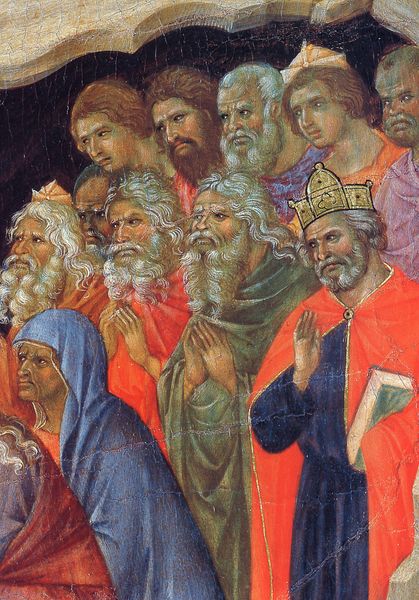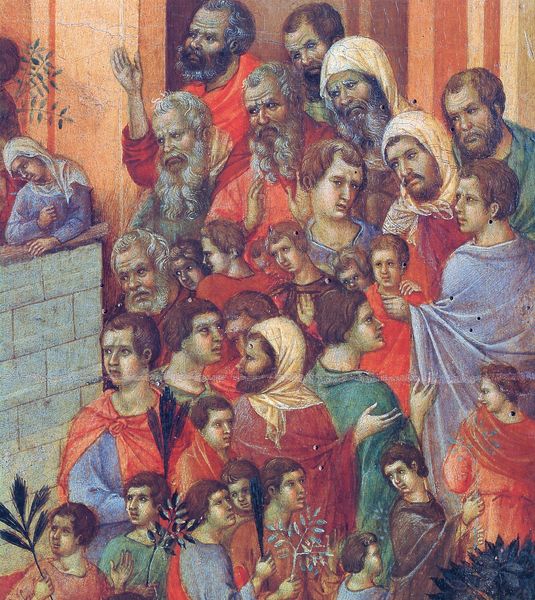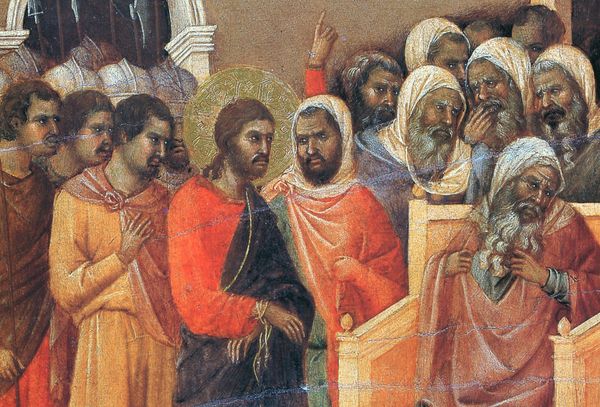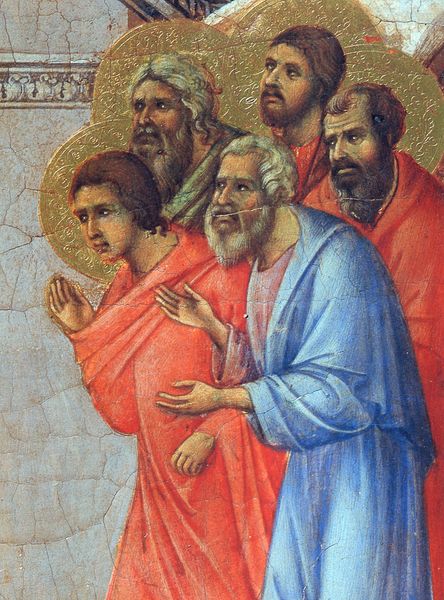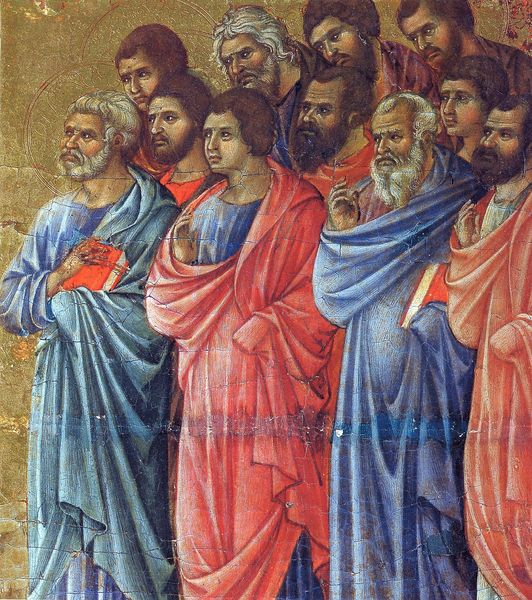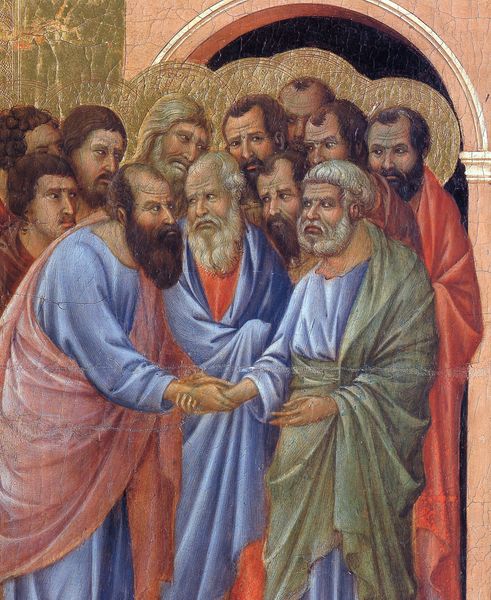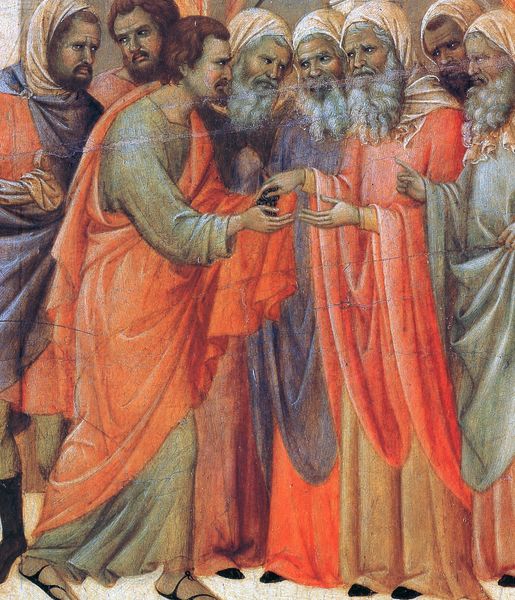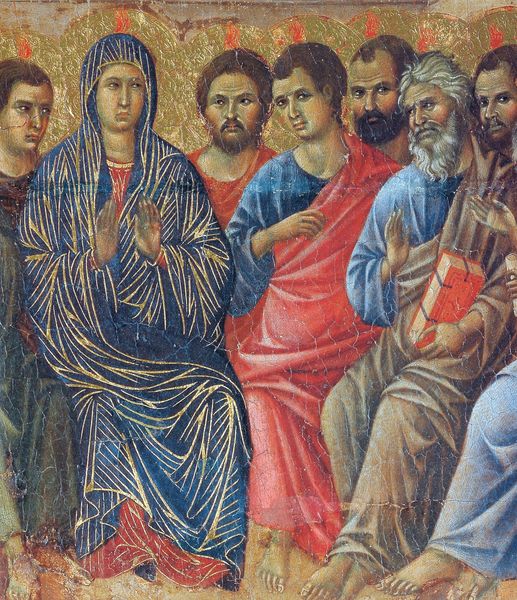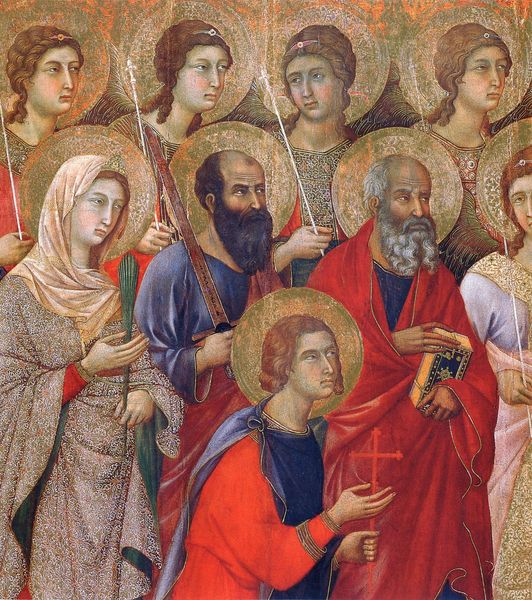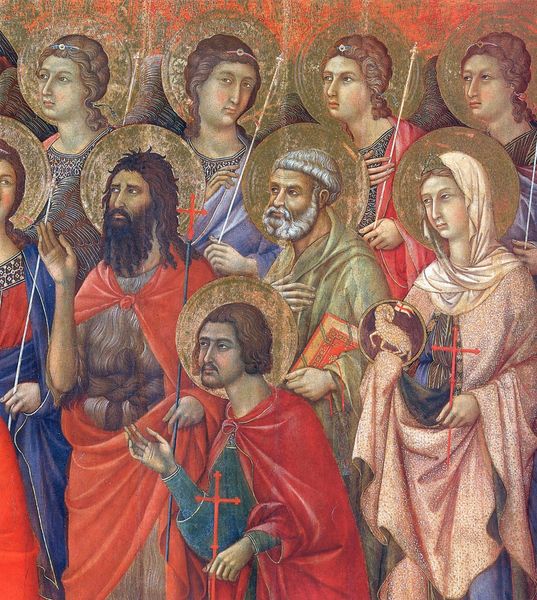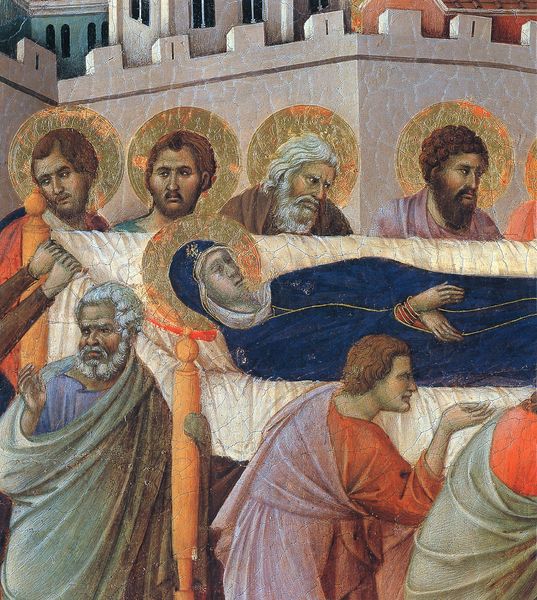
tempera, painting
#
portrait
#
medieval
#
narrative-art
#
tempera
#
painting
#
sienese-school
#
figuration
#
christianity
#
italian-renaissance
#
christ
Copyright: Public domain
Curator: This fragment, titled "Crucifixion," was painted around 1311 by the Italian artist Duccio di Buoninsegna, utilizing tempera on wood. The painting is thought to be a segment extracted from a larger narrative piece, though details of the original work remain debated by historians. Editor: Whoa, that’s intense. Even as a fragment, the emotion is palpable. Everyone's faces... It’s like witnessing a collective, horrified intake of breath. Curator: Indeed. What you are picking up on there is partly by design; The late medieval period in Italian painting began seeing experimentation to invite beholders into deeper empathic relation to narrative images, something the Franciscan religious orders championed. Editor: It really pulls you in, doesn't it? The density of figures is interesting - there are a lot of agitated reactions here, aren't there? And all these pointed hands make me imagine an uproar, full of disbelief and blame... What sort of cultural impact would this have had on its first viewers, then? Curator: Well, we must contextualize. Crucifixion scenes were incredibly common at the time, ubiquitous, even; It was a well-understood religious, social, and even political event to depict for the community, laden as the imagery was with complex historical resonances. Editor: Right, and for a primarily illiterate populace, images become vital documents... It's almost a freeze-frame of grief. Is that typical of Duccio’s rendering of emotion, compared to say, other painters from the Sienese School? Curator: I am glad you brought this point up! You know, his innovations included more naturalistic representations of figures, which allowed for more subtle emotional expressions and human interactions and distinguished Duccio from his contemporaries. His impact on Italian painting, and the development of Western art in general, is simply huge, I would contend! Editor: Makes you wonder about the larger narrative and other expressions also lost. It’s powerful on its own, though; the focus on the witnesses rather than Christ himself really resonates today, you know? Kind of a snapshot of the public square... What's everyone going to do *now*? Curator: Indeed. A key takeaway, I believe, is how art serves as a mirror, reflecting cultural values, beliefs, and power dynamics in both overt and very subtle ways. Editor: Absolutely! Thanks, its just… the fragment makes it almost painfully modern and open, even 700 years on. It’s good food for thought.
Comments
No comments
Be the first to comment and join the conversation on the ultimate creative platform.
